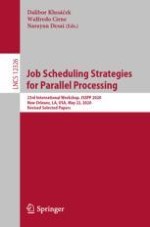This book constitutes the thoroughly refereed post-conference proceedings of the 23rd International Workshop on Job Scheduling Strategies for Parallel Processing, JSSPP 2020, held in New Orleans, LA, USA, in May 2020.*
The 6 revised full papers presented were carefully reviewed and selected from 8 submissions. In addition to this, one invited paper and one keynote pare were included in the workshop. The papers cover topics within the fields of resource management and scheduling. They focus on several interesting problems such as resource contention and workload interference, new scheduling policy, scheduling ultrasound simulation workflows, and walltime prediction.
* The conference was held virtually due to the COVID-19 pandemic.
